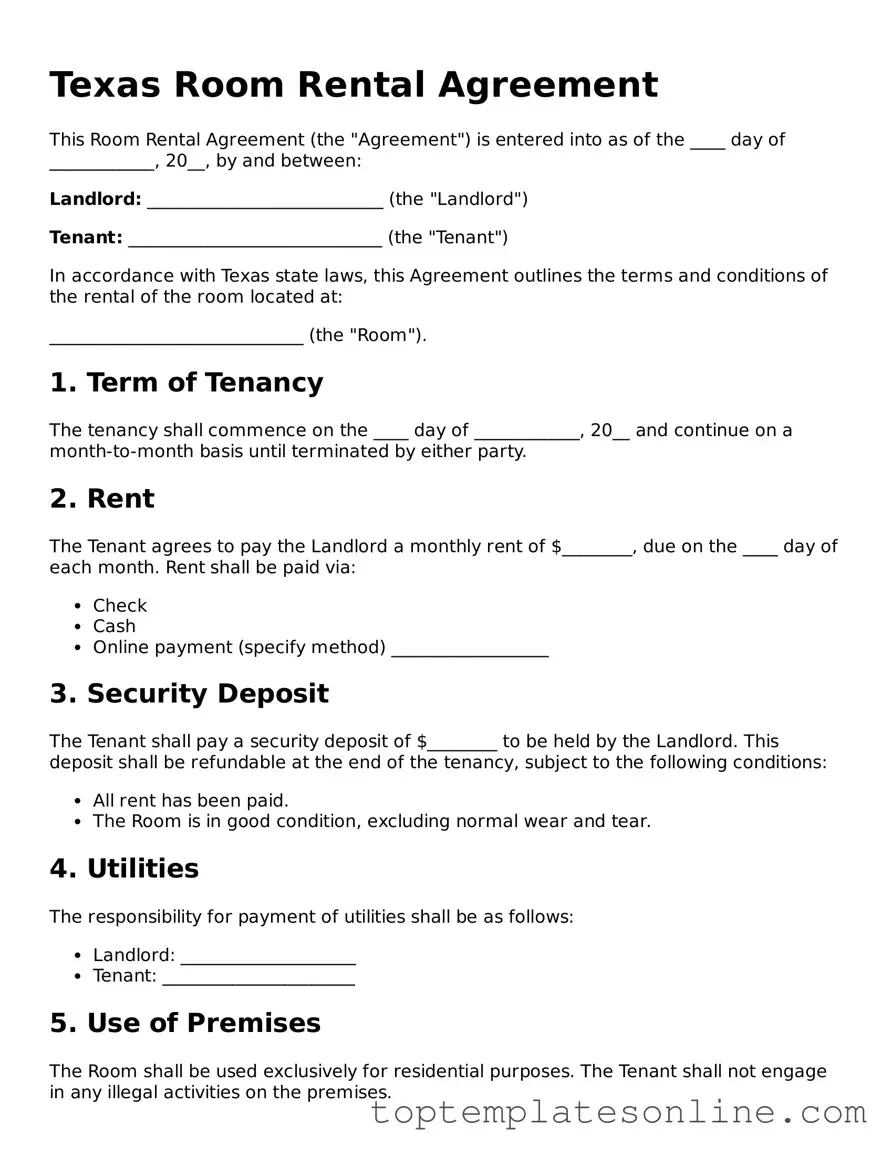Blank Room Rental Agreement Template for Texas State
The Texas Room Rental Agreement is a legal document that outlines the terms and conditions between a landlord and a tenant for renting a room within a property. This agreement serves to protect the rights of both parties and clearly defines expectations regarding rent, duration of stay, and responsibilities. Understanding this form is crucial for anyone involved in room rentals in Texas to ensure a smooth and fair rental experience.
Customize Room Rental Agreement Here
